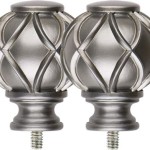Get Mold Out of Shower Curtain: A Comprehensive Guide
Mold growth on shower curtains is a common problem, especially in humid environments. It can appear as unsightly black or green spots, and may even give off a musty odor. Fortunately, removing mold from a shower curtain is usually a straightforward process, and with the right approach, you can restore your shower curtain to its former glory. This guide will provide you with clear instructions and helpful tips on how to tackle mold on shower curtains effectively.
Understanding Mold Growth
Mold thrives in warm, moist environments. Your shower curtain provides the perfect breeding ground for mold spores due to the constant exposure to moisture and heat. The spores settle on the fabric, germinate, and start growing. Once mold takes hold, it can be challenging to eradicate completely. However, prompt action can prevent further spreading and discoloration.
Key Steps to Eliminate Mold
Here's a step-by-step guide on how to remove mold from a shower curtain:
1. Remove the Shower Curtain
The first step is to remove the shower curtain from the shower rod. This will allow you to work on it in a well-ventilated area.
2. Pre-Treat the Mold
Before cleaning the entire shower curtain, pretreat any areas with heavy mold growth. This can be done with a diluted solution of bleach and water. Using a spray bottle, apply the bleach solution to the affected areas, making sure to cover all visible mold. Let the bleach sit for 10-15 minutes, then rinse the curtain thoroughly with clean water.
3. Choose the Right Cleaning Method
There are several methods for cleaning mold off shower curtains, each with its own advantages and disadvantages. Common approaches include:
A. Using a Washing Machine
Many shower curtains are machine-washable, making this the most convenient option. Follow the care instructions on the curtain's label. If your washing machine has a sanitize cycle, select it. For a deeper clean, add 1/2 cup of borax to the washing machine along with your regular detergent.
B. Handwashing
If your shower curtain is not machine-washable, handwashing is the best option. Fill a tub with warm water and add gentle detergent. Submerge the shower curtain in the solution and let it soak for 30 minutes. Then, rub the fabric gently to remove any remaining mold. Rinse the curtain thoroughly with clean water and hang it to dry in a well-ventilated area.
C. Using a Cleaning Solution
You can also use a commercial mold and mildew cleaner specifically designed for fabric. Follow the instructions on the product label carefully. Spray the cleaner onto the shower curtain, let it sit for a few minutes, and then scrub the fabric gently with a soft-bristled brush. Rinse the shower curtain thoroughly with clean water and hang it to dry.
4. Dry Thoroughly
After cleaning, it is crucial to dry the shower curtain completely. This will prevent mold from regrowing. If you're using a washing machine, select the spin cycle twice to ensure maximum water removal. For hand-washed or non-machine-washable curtains, hang them in a well-ventilated area, preferably outdoors in direct sunlight, until completely dry.
Prevention Strategies
Once you've removed the mold, it's important to take steps to prevent it from returning.
1. Maintain Proper Ventilation
Adequate ventilation is key to preventing mold growth. Make sure your bathroom has an exhaust fan that works properly. Turn it on before, during, and after showering. You can also try opening a window to allow fresh air circulation.
2. Dry the Shower Curtain
After each shower, make sure to wipe down the shower curtain with a clean cloth to remove any excess water. If possible, let the shower curtain air dry fully by leaving it slightly open. This will prevent moisture from accumulating and creating a breeding ground for mold.
3. Regular Cleaning
Regular cleaning is essential for preventing mold growth. Clean your shower curtain at least once a week, or more often if you notice any signs of mold starting to develop. You can use a simple solution of vinegar and water to clean the shower curtain. Simply spray the solution on the curtain and wipe it down with a clean cloth.
4. Consider a Mold-Resistant Shower Curtain
If mold continues to be a problem, invest in a mold-resistant shower curtain. These curtains are made from materials that are less susceptible to mold growth. They can be a worthwhile investment in the long run, as they require less maintenance and are less likely to develop mold.
By following these steps, you can effectively remove mold from your shower curtain and prevent it from returning. Remember to always check the care label on your shower curtain for specific cleaning instructions.

How To Clean A Shower Curtain Homeserve Usa

How To Clean A Moldy Shower Curtain Without Bleach

How To Prevent Mould Growth On Your Shower Curtain And Keep It As Dry Possible Express Co Uk

How To Clean A Moldy Shower Curtain Without Bleach

Mold On Shower Curtain Causes Prevention And Solutions

How To Remove Mold From Fabric Shower Curtain 4 Methods Display Cloths

Kate Aurora Hotel Collection Heavy Duty Water Mold Mildew Resistant Standard Sized Fabric Shower Curtain Liner Assorted Colors Wal Com

Cleaning The Shower Curtain Liner House Central

Mold Mildew Resistant Fabric Shower Curtain Liner White Wal Com

How To Get Rid Of Mold In Bathroom 2024 Tips From Puroclean








